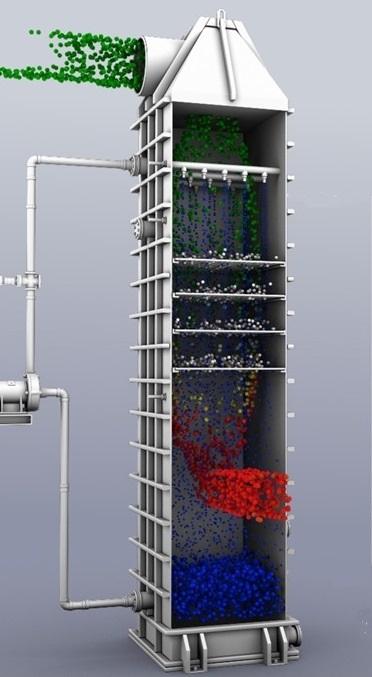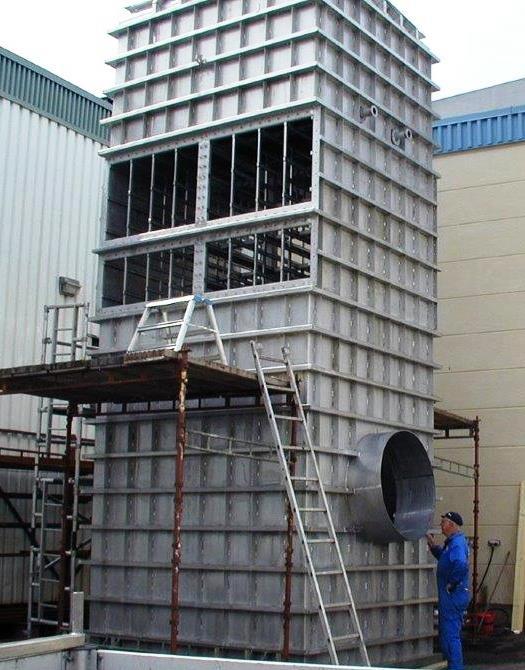Internationale Partnersuche
Innovation & Technologie Angebot
Highly efficient dynamic scrubber technology, especially suitable for cleaning of industrial and marine diesel exhaust emissions, for licensing or patent acquisition
Country of Origin: Sweden
Reference Number: TOSE20170425001
Publication Date: 25 April 2017
Summary
A Swedish SME has developed and patented a highly efficient scrubber technology, especially suitable for cleaning of industrial and marine diesel exhaust emissions. The technology combines large contact surface with a low and constant back-pressure, compact dimensions and low weight. The SME is looking for partners in the industrial and/or shipping sectors, for a commercial agreement with technical assistance, meaning acquisition of the patent or a license agreement.
Description
A scrubber is an air pollution control device, used to remove particles and gases from the exhaust streams of various types of combustion engines. A Swedish SME has developed and patented a highly efficient dynamic scrubber technology, especially suitable for particulate matter (PM), sulphur oxides (SOx) and nitrogen oxides (NOx) cleaning of industrial and marine diesel exhaust emissions.
The technology combines large contact surface with a low and constant back-pressure, compact dimensions and low weight.
The principle for cleaning exhausts from SOx is based on the chemical fact that an acid is neutralized with alkali, for example sodium hydroxide (NaOH). When fossil, sulphurous fuels are combusted, SOx is released, and needs to be taken care of. In a scrubber, the SOx is neutralized through contact with a washing fluid, consisting of a water solution of NaOH. In the process, the sulphur is bound as sodium sulphite (Na2SO3).
The efficiency of a scrubber depends on a variety of factors.
The scrubber design, developed and patented by the Swedish SME, is based on a system of cassette trays with leaf valves, which regulate the gas throughput to a desired level, typically in the range 1 - 4 m/s, and whip the process liquid to a foam over the trays.
A scrubber equipped with one or several valve-cassette tray bottoms has, during pilot tests, proven to be very suitable to clean the exhaust emissions from marine diesel engines due to its dynamic characteristics. These engines are extremely sensitive to high back-pressure, and the scrubber design permits the back-pressure to be kept at a very low and constant level, throughout the entire RPM and power range of the engine.
An almost 100 % efficient sulphur removal has been proven, even during tests using fuel with increased sulphur content. Also, no preceding soot removal step, e g a Venturi scrubber, is necessary, which significantly lowers the cost and energy consumption.
At increased sodium sulphite levels, the basic NOx reduction of the scrubber can be pushed up to 25 %, without using any additive oxidation substance, for example chlorine dioxide (ClO2). Faced with the new requirements regarding nitrogen oxide purification, which will take effect in 2020, this is not enough.
The use of an oxidation substance additive in the here described NaOH scrubber invention is possible mainly due to the liquid/foam layer over the trays ensuring all NO being converted to NO2.
In conclusion, a scrubber of this design allows a very effective and close to 100% simultaneous cleaning of both NOx and SOx thanks to its large wet reaction area (rocker valves with counter weights) in combination with the foam layer over each tray and not least the ability to create an even gas flow over the cross-sectional area and to handle a high PM content and a high sulphite content without showing clogging problems. These properties, unique in the industry, mean that the scrubber can be made smaller than other scrubber types, which is a characteristic that is appreciated in industrial contexts. Furthermore, the possibility of operating at a higher sulphite level saves chemicals.
A Swedish patent is already granted, and a Patent Cooperation Treaty (PCT) application is submitted.
The Swedish SME is looking for partners in the industrial and/or shipping sectors, for a commercial agreement with technical assistance, meaning acquisition of the patent or a license agreement.


Advantages and Innovations
* Close to 100% cleaning of SOx and 25% cleaning of NOx, without using additive oxidation substance in the process, or near 100% NOx reduction if such oxidation substance is added
* Insensitive to soot particles in diesel exhausts
* Low back-pressure drop (1600 Pa), which is kept constant, independently of engine load; very beneficial for soot and SOx removal, especially in the marine field
* "Dynamic" trays, 100 % covered with leaf valves enables efficient use of surface area and thereby compact dimensions
* Light but still solid construction
* Operates at high sodium sulphite levels, up to at least 200 g/l, effectively minimizing NaOH and fresh water consumption
* Easy maintenance through hatches during operation
* No so-called stroke formation, resulting in less alkali consumption
* The "open loop" sea water scrubber that is common today is not a sustainable solution, whereas the design offered here, a "closed loop" type, is sustainable and meets the maritime zero vision, according to the Swedish agency for marine and water management
Stage Of Development
Field tested/evaluated
Stage Of Development Comment
Fully tested.
Requested partner
Type of partner: Industry and/or shipping related
Specific area of activity: Any area where efficient exhaust emission cleaning is needed
Tasks to be performed: Either acquisition of the PCT patent or licensing of it
Cooperation offer ist closed for requests

